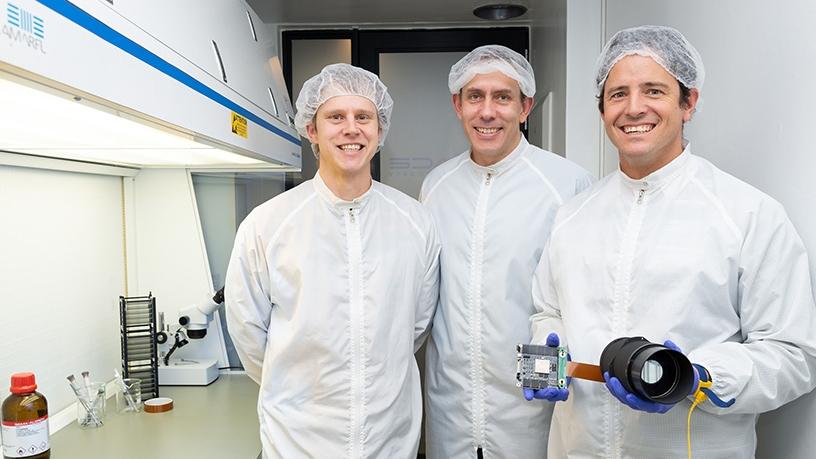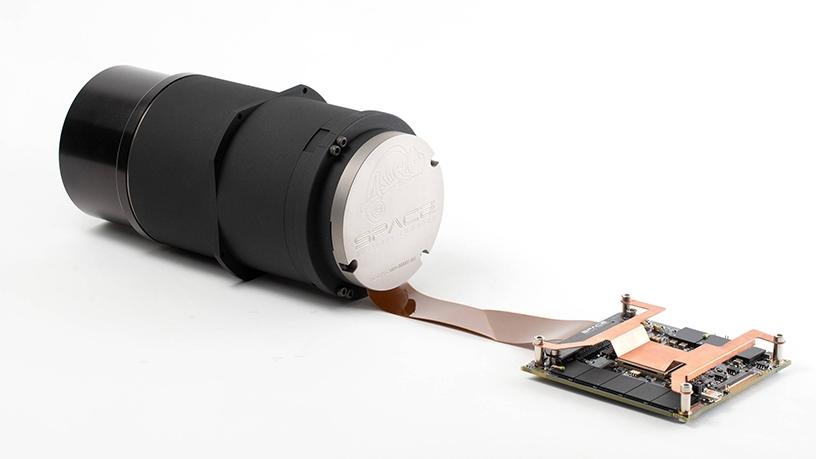
South African company Space Advisory Company (SAC) is poised to deliver the highest resolution hyper-spectral camera yet to fit into a CubeSat.
A CubeSat is a miniaturised satellite for space research that is made up of multiples of 10x10x10cm cubic units. CubeSats are commonly put in orbit by deployers on the International Space Station, or launched as secondary payloads on a launch vehicle. Over 800 CubeSats have been launched as of April 2018.
SAC's innovations come as SA is forging ahead with its space agenda. This month, SA participated in the United Nations Conference on the Exploration and Peaceful Uses of Outer Space in Vienna, Austria.
Last week, Cape Town-based SAC celebrated the anniversary of the first image taken over Canada by its Gecko Imager from outer space at an altitude of 400km.
According to SAC, the imager is still operating flawlessly from its satellite orbiting Earth. It points out that this anniversary follows hot on the heels of supplying a critical digital controller unit for a Dutch astronomy experiment hitching a ride on the Chinese Change'4 satellite currently orbiting the far side of the moon.
"Our next exciting step is producing the Chameleon Imager for the standard CubeSat 2U volume which will realise a ground resolution of 10m over a swath of 32km wide from a distance of 500km," says Duncan Stanton, CEO of SAC.
"This means we will fit a camera into a box the size of two hands put together with a weight of 1.35kg which can recognise an object as small as a bus from 500km away. This camera is configured to store up to 160GB of data on board in either RGB, Multispectral or Hyperspectral format, with a multitude of potential applications such as enabling food security programmes through crop monitoring and bio-mass classification, mining and prospecting, fire detection and infrastructure monitoring.
"Our Chameleon Imager is a highly capable and configurable system, hence the name, which draws heritage from both the space-proven operational Gecko Imager plus the hardware developed by us for the Netherlands-China Low Frequency Explorer currently on board the Change'4 satellite orbiting the low gravity Second Earth-Moon Lagrange Point (E-M L2) some 60 to 80 000 kilometres beyond the moon," says Stanton.

The Gecko Imager won an innovation award at the 2017 Da Vinci Top Technology Awards in SA. The company's first in-house space-borne hyper-spectral imager, initially developed with support from the Aerospace Industry Support Initiative, was delivered to SCS-Space by SAC during 2017 for testing and calibration in SCS-Space's recently commissioned facility.
"A final and crucial link in the chain has been added by SCS-Space. This means that essential facilities required during design, development, integration and testing are available within the SCS Aerospace Group," says Daniel van Niekerk, COO of Space Advisory Company.
"Having the major critical components, supply chain and facilities locally within South Africa ensures we can deliver cutting-edge technology, such as the Hyper-spectral Chameleon Imager, to the local and international market."
The company also states that the environmental constraints imposed on the in-house-designed systems ensure they will survive the harsh effects of vacuum, radiation, heat and vibration encountered en-route and in space.
With an internal design philosophy focused on modularity, quality, high-performance and volume-constrained systems, its products are also suitable to opportunities closer to Earth on High Altitude Aerial Platforms such as drones or any area where remote observation is required, it adds.
Share